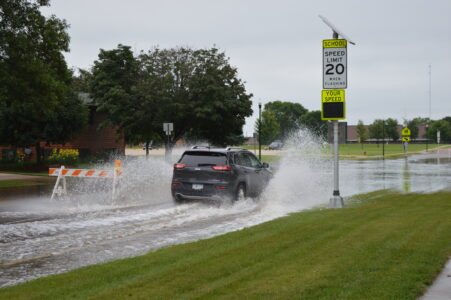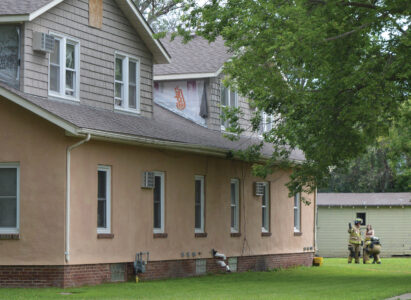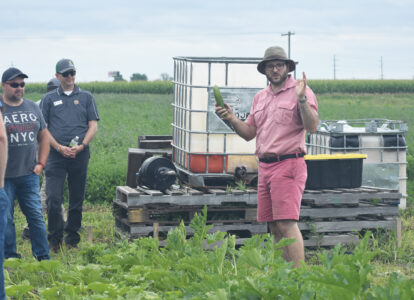Sen. Smith: Child care support crucial for nation’s COVID-19 recovery
MARSHALL — It’s no surprise to area residents that there was a child care shortage in greater Minnesota even before COVID-19. But the pandemic has put pressures on child care providers and families that are already having a negative effect on the state’s workforce and economy, Sen. Tina Smith said Friday.
“Child care is part of the basic economic infrastructure we need in this country, just like housing and transportation. Our economy isn’t going to work if families can’t find safe, affordable, good quality child care options,” Smith said.
In a virtual press conference Friday afternoon, Smith called for support to help stabilize child care providers in the short term and make sustainable changes in the long term. Smith said aid funding for child care providers is part of a recovery package currently being addressed by Congress.
“Our goal and our plan has been $50 billion to help shore up the nation’s child care system during the pandemic,” Smith said. “We secured $10 billion in the December COVID relief package. That included about $135 million for Minnesota . . . but we need $40 billion dollars more, and that is what we are working on right now to get included in the COVID recovery package that we are currently working on and negotiating in Congress.”
Friday’s press conference came at a time when Marshall area residents have also been discussing the need for more available and affordable child care. Earlier this week, the Marshall School Board heard a proposal to try and keep the Marshall Area Childcare Center open without operating at large losses every year.
“The COVID pandemic has pushed child care to the brink, and put many providers at risk of going out of business,” Smith said Friday. “Finding good quality, affordable child care had been a huge challenge for families even before the pandemic, and COVID-19 has made the situation so much worse.”
Smith’s statements were echoed by child care providers and parents from the Winona area, who spoke during Friday’s press conference.
“This isn’t a pandemic-related problem,” said Christie Ransom, president and CEO of the Winona Area Chamber of Commerce. “This existed far before the pandemic, and it’s regional, it’s statewide, it’s nationally. All across the country we’re facing these things, but the pandemic really laid it bare.”
Rural areas are losing child care providers “at crisis levels,” Smith said. “The Center for Rural Policy and Development just came out with numbers which tell us that over the past 20 years, greater Minnesota has lost over 20,000 child care spots,” Smith said. Southern Minnesota faced a child care placement shortfall of 24% at the end of last year, she said.
Losing child care options impacts not only child care providers and families, but the economy, Smith said.
Data released by the Minneapolis Federal Reserve showed that many parents with young children — especially mothers — were leaving the workforce to care for their children during the pandemic, Smith said. However, women were less likely than men to return to work.
“And according to the Federal Reserve in Minneapolis, labor participation among moms with young children dropped a little over 11% between September of 2019 and November 2020,” she said.
Smith said U.S. legislators understood the need to try and stabilize the child care industry as part of COVID-19 relief funding.
“There is $40 billion in the House package, and we expect there to be the same amount in the Senate package,” Smith said. “These are dollars that would flow to providers through the states, through the Child Care Development Block Grant,” and be used to help pay for costs like salaries and personal protective equipment, she said.
“There is actually great agreement right now between the House and Senate on what we need to do,” Smith said. She said the House would be voting on the issue “very shortly,” and the senate would pick it up from there. “Our goal is to get this done, the entire package done, by the middle of March.”
Both smith and Winona area community members said they thought it would take more in the long run to help strengthen child care options in greater Minnesota.
As Minnesota communities work on economic recovery from COVID-19, they will have to address child care needs for their employees to return to work, Ransom said.
“Things have to be more favorable for people to start (child care) centers and in-home daycares again,” she said. “I think the amount of red tape that they have to go through and the lack of assistance make it impossible, or less favorable for people to navigate those opportunities. And then that leaves the big lack of child care that you’re seeing, where we have all these children and no places for them to go.”



